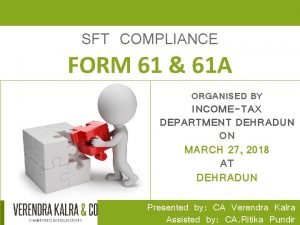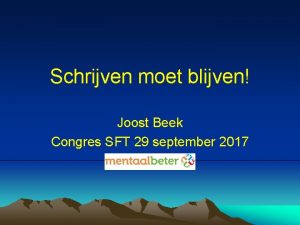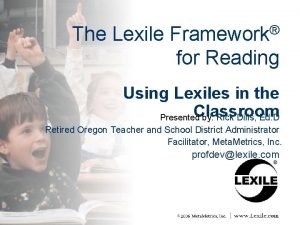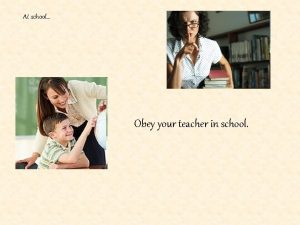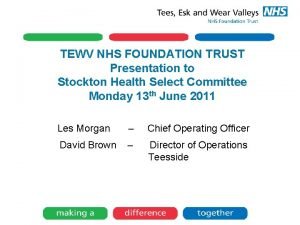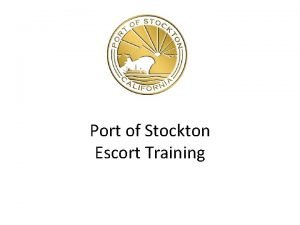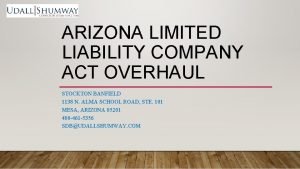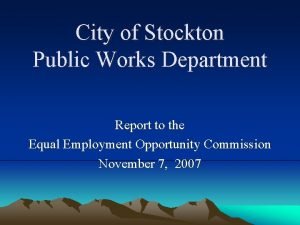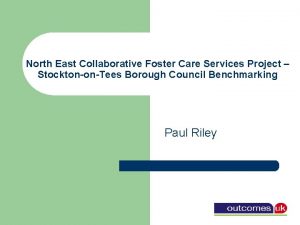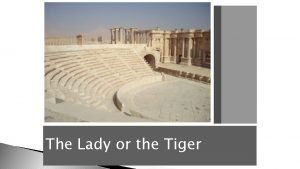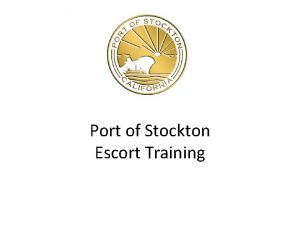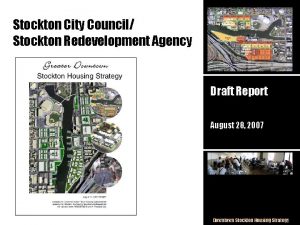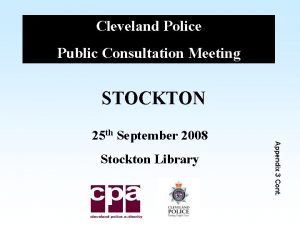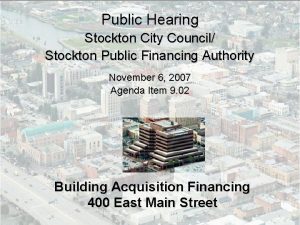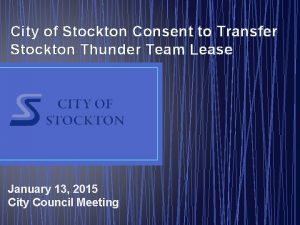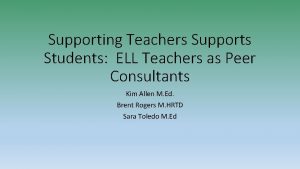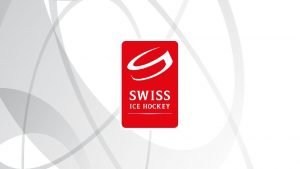Stockton Federation of Teachers SFT Techniques for Students















- Slides: 15

Stockton Federation of Teachers (SFT) Techniques for Students with Invisible Disabilities

Background • “You may look at a student and say, you know, you look like every other student in the class, what do you mean you need note-taking? What do you mean you need extra time on the test? It might not be apparent to a faculty member that a student has a disability, but that disability may impact their participation in the class (doit@uw. edu; www. uw. edu/doit/). ”

What Do We Mean by “Invisible” Disabilities? • Many students who have learning differences or difficulties that adversely affect their education face barriers to getting the support they need in educational settings. • Invisible disabilities may affect the way a student processes, retains, and communicates information. A student may not be able to screen out distractions, making it hard to focus; may not have the stamina for a full class load; or may not be able to interact well with others. Anxiety make it difficult to take tests or to approach professors with questions. All people experience their disabilities uniquely (doit@uw. edu; www. uw. edu/doit/).

Examples of “Invisible Disabilities” • Invisible disabilities are the most common type of disability among college students. They are: • • • Learning Disabilities Attention Deficit/Hyperactivity Disorder (ADHD) Asperger’s/High-Functioning Autism Some forms of Epilepsy Mental Health Conditions (i. e. , Anxiety, Reactive Attachment Disorder) Dyslexia/Dysgraphia Gifted students with additional exceptionalities Sensory Processing/Integration Disorders Auditory and Visual Processing Disorders Anxiety, OCD, etc.

Possible Reasons for Refusing Services and Accommodations Educators view the disability as: • a “behavior, ” in the sense that the student is in control of the problem and can just stop doing it – if he/she wanted to. • The student is considered lazy, unmotivated, or rebellious. • The student is just not “paying attention. ” • Some educators do not believe in some disabilities such as Bipolar Disorder or ADHD.

Accommodations • College Student with disabilities may or may not require accommodation. • It is college students responsibility to self-disclose, provide documentation, and request accommodation.

Accommodations • Instructional accommodations are changes made to the delivery of classroom instruction or to the accompanying materials. • An accommodation to the curriculum does not change the content (i. e. , social studies) nor the concept difficulty (i. e. , compare and contrast the causes of the Revolutionary War). • Accommodation changes the input and/or output method used by the faculty and/or student related to the instructional outcome

Accommodations can include: • Alternative acquisition modes • Content enhancements • Alternative response modes

Accommodations: Alternate Acquisition Modes and Content Enhancements Alternative Acquisition Modes • • • video tape audio tape computer readers Interpreters Braille, etc. Content Enhancements • Chapter Outlines/Power Point • advance organizers • visual displays • study guides • mnemonic devices • peer mediated instruction • computer assisted instruction

Accommodations: Alternate Response Modes Alternative Response Modes • • • oral response or written response Create Posters; Debate; Projects, etc. Use of notecards and post it for responses Technology (Polls Everywhere; Apps; etc. ) computer/word processing

Possible Solution • Universal Design for Learning (UDL): strives to ensure that the learning environment promotes learning and removes barriers (www. cast. org); • Universal design of learning (UDL) ensures that curriculum and courses utilize multiple means of representation (video, lecture, etc. ), expression (paper, presentation, etc. ), and engagement. • In a higher education environment, UDL principles can be applied to physical spaces, technology, student services, and instruction; For example: • have policies and procedures that ensure access to facilities, printed materials, computers, and electronic resources for all learners,

Examples of UDL practices include • • • arranging seating so that everyone has a clear line of sight welcoming students by name, avoiding stigmatizing a student by drawing undue attention to a difference, using large, bold fonts with high contrast on uncluttered overhead displays and speaking aloud all content, providing multiple ways to gain and demonstrate knowledge and using multiple senses, avoiding unnecessary jargon and defining terms, providing scaffolding tools (e. g. , an outline), selecting materials early, providing materials in accessible formats, providing opportunities for submitting drafts, testing in same manner in which you teach,

Possible Solution: Assistive Technology Device: . . any item, piece of equipment or product that is used to increase, maintain or improve functional capabilities of individuals with disabilities. Low-tech • Post its or Note cards • Graphic Organizers • adapted books • slant board to write • highlighters, tape • magnifiers • color coding • sign language • Colored papers • Large printed content • extra time • peer support Mid-Tech High-Tech • word processor • computer • text to speech • spell checker • calculator • digital recorders • timers • organizers • e-books • adapted keyboard • adapted mouse • adapted toys • smart phones • smart pens • PDAs • magnification software • speech output devices • switch, • joystick access • scanning access • voice recognition • environmental control devices

Possible Common Solutions • Some accommodations may include: • seating near the door to allow taking breaks; • alternative note taking: tape recorder, note taker, or a copy of instructor’s notes; and • early availability of syllabus and textbooks. • Assignment accommodations include • • advance notice, additional time for completion, feedback and assistance in planning workflow, choice of written or oral presentation or creating a project, etc. , • Accommodations for exams include • • • alternate format: multiple choice, essay, oral, presentation, role-play, or portfolio; use of adaptive computer software such as speech recognition; extended time for test-taking; taking tests in a separate, non-distracting room; and a scribe, reader, or word processor for exams.

Resources • Invisible Disability Information: http: //www. disabled-world. com/disability/types/invisible/ • How to create a welcoming environment: https: //www. uua. org/sites/livenew. uua. org/files/handout_tips_and_techniques_to_provide_a_welcoming. pdf • Invisible Disability Awareness: https: //invisibledisabilities. org/blogs/invisible-disabilities-awareness/ • Center for Universal Design: www. ncsu. edu/ncsu/design/cud • Basic overview video of UDL: https: //www. youtube. com/watch? v=x. TSh. Qyw 3 m 80 • UDL: Principles and Practice: https: //www. youtube. com/watch? v=p. GLTJw 0 GSxk • UDL guidelines: https: //www. youtube. com/watch? v=rfsx 3 DGpv 5 o • CAST: www. cast. org • National UDL Center: www. udlcenter. org • National UDL Task Force: www. udl 4 allstudents. org • Assistive Technology: http: //www. augsburg. edu/class/groves/assistive-technology/everyone/
 Meta sft
Meta sft Sft compliance
Sft compliance Schematherapie nadelen
Schematherapie nadelen Kim kroll teachers pay teachers
Kim kroll teachers pay teachers Read 180 lexile grade level chart
Read 180 lexile grade level chart We have to obey our teachers
We have to obey our teachers Rizal's salute to luna and hidalgo summary
Rizal's salute to luna and hidalgo summary Stockton municipal code
Stockton municipal code Aysgarth tewv
Aysgarth tewv Stockton escort
Stockton escort Patrick henry elementary school
Patrick henry elementary school Banfield stockton
Banfield stockton Stockton escort sumo
Stockton escort sumo Public works stockton
Public works stockton Fostering stockton on tees
Fostering stockton on tees Stockton
Stockton

